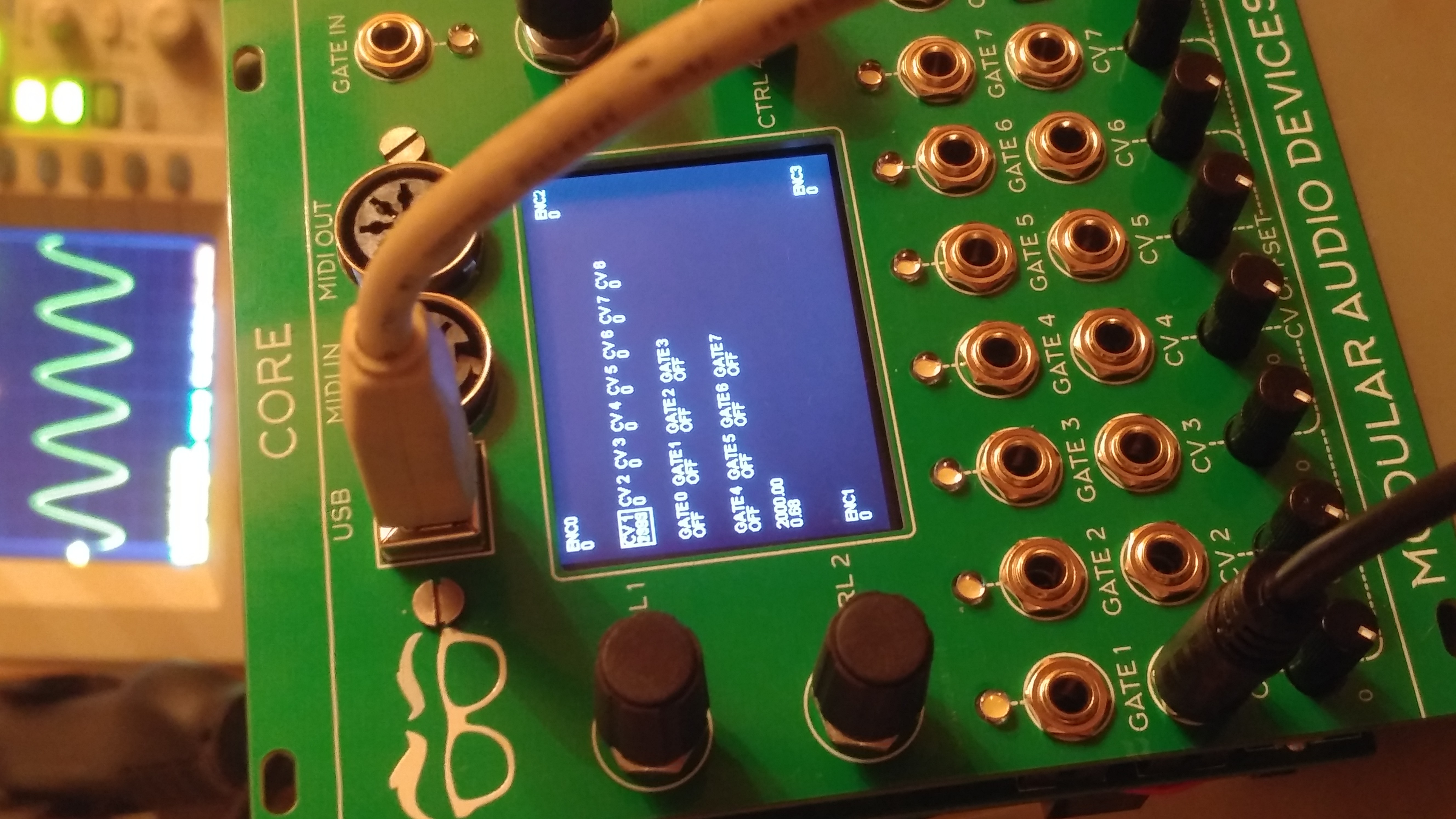Hi there,
It's been a long time since my last update, but there's a reason to this. The first prototype of the new Eurorack CORE module was a bit faulty, the CV section was not working as I wanted, and the two boards layout with clunky connectors made the thing quite expensive.
I spent the last couple of months fixing issues and optimizing the design, and I ended up with two more revisions. This last revision, rev3, uses less than half of the resistors of the first one, 8 opamps less, loses the 8 CV offset pots to favor a more stable 2 way switch to select between unipolar and bipolar CV out, and reduces the CV out range from 10V to 8 (who needs 10 octaves anyway). I also lost the 2.4 inch ILI9341 custom board to favor a ready-made 2.2 inch one, this should help in production, and added space for a SPI ROM to store all the user programs/configurations/settings/sequences/etc. Finally, I added a dedicated Clock output (the Gate In TS jack becomes a 3.5mm TRS jack with Clock In/Clock Out), and most importantly I managed to fit the whole design in one 105x105mm board.
Then, I began working on two smaller versions of the CORE, which are the CORE lite and CORE mini. These will be not only a cheaper and smaller alternative to the CORE, using a Teensy 3.2 instead of the 3.6, and reducing the number of CVs/Gates to 4 and 2 while keeping the 2 CODEC connectors on for 4in/4out audio, but also (in the case of the CORE mini) to provide standalone functionality to the CTRL modules, as explained in the next paragraph.
The CTRL modules are my new approach to complex control surfaces with high expandability: I ditched the IOAPEX design because it was "dumb" and because I couldn't find a decent way to hide the module in an Eurorack system that wouldn't require drilling holes in a case. For "dumb" I mean that using the IOAPEX the CORE could not be automatically aware of which module is connected to it. The new CTRL modules host a MCU that communicates via HS I2C with the CORE, therefore any installed module can declare its functions to the CORE without much user intervention; the idea is that you plug in a module and the CORE would either scan for newly installed modules at boot or at user's request and it will automatically know what's in the system. Having an MCU means that there's also room for more advanced functions; in particular I am going to use a SAML21 from Atmel/Microchip, a chip that has two integrated 12 bit DAC channels, HS I2C, USB, UART for MIDI I/O, and of course ADC pins for the analog sensors (pots, sliders, etc) and digital pins to control LEDs and buttons. These advanced functions will allow any of these modules to be used as CORE mini controllers; I still have to properly figure this out but the idea is that instead of getting a CORE mini + Teensy 3.2, an user could just buy the "raw" CORE mini board and plug it in some way to the CORE mini; I am thinking of making a Teensy 3.2 mockup PCB that provides a nice connector for the CTRL module.
There's not been any development yet on the CODEC, that is I yet have to adapt my old designs into an Eurorack compatible format; other than that, I was thinking of using a more easily available CODEC chip, since there's no AKM distributor in Europe (yet). The only new idea I had was to provide both Eurorack-level and Line-level inputs and outputs on two different jacks; a cool thing would be to also let the CODEC work as a standalone module, that is to say without a CORE plugged the module would just convert line-to-eurorack and viceversa. The Eurorack-level connector will also be used as an external pre/post connector; for example, the HI-Z module will have an Eurorack-level output that can be connected to one Eurorack-level input on the CODEC to effectively have an HI-Z channel on your CODEC interface.
While I keep working, you can take a look at this short video of the the rev1 CORE prototype where I turn on and off some Gates and I change the value of one CV out using a test GUI.
Also, here's a pic of the rev1 prototype outputting a sinewave from one of its CV outs.

Cheers,
Mick
 Michele Perla
Michele Perla
Discussions
Become a Hackaday.io Member
Create an account to leave a comment. Already have an account? Log In.